Side pain is a common complaint that can affect people of all ages and backgrounds. It refers to any discomfort or ache that occurs in the left or right side of the torso, between the ribs and the hips. Side pain can have various causes, ranging from mild to serious, and may involve the muscles, nerves, organs, or other tissues in the area. In this article, we will explain what side pain is, how to differentiate between left and right side pain, and why it is important to understand the possible causes, symptoms, and diagnosis of side pain.
Understanding Side Pain
Definition and common descriptions
Side pain is not a specific medical condition, but rather a symptom that can indicate an underlying problem. Side pain can be acute or chronic, depending on how long it lasts and how often it occurs. Acute side pain is usually sudden and severe and may be related to an injury, infection, or inflammation. Chronic side pain is more persistent and may be related to a chronic condition, such as kidney disease, arthritis, or cancer.
Side pain can be described in different ways, depending on the cause and the location of the pain. Some common descriptions of side pain are:
- Sharp or stabbing pain, may indicate a problem with the spleen, liver, gallbladder, appendix, or lungs.
- Dull or aching pain may indicate a problem with the kidneys, bladder, intestines, or pancreas.
- Cramping or spasming pain may indicate a problem with the stomach, colon, or uterus.
- Burning or tingling pain, which may indicate a problem with the nerves, such as sciatica, shingles, or nerve compression.

Differentiating between left and right-side pain
Side pain can occur on either the left or the right side of the body, and sometimes both. The location of the pain can help narrow down the possible causes and guide the diagnosis. However, some causes of side pain can affect both sides of the body, or cause referred pain, which means the pain is felt in a different area than the source of the problem.
Some common causes of left-side pain are:
- Enlarged or damaged spleen, which can cause pain behind the left ribs, especially after an injury or infection.
- Diverticulitis, which is an inflammation of the pouches in the colon, can cause pain in the lower left abdomen, along with fever, nausea, and changes in bowel habits.
- Heart attack, which can cause pain in the left chest, arm, shoulder, or jaw, along with shortness of breath, sweating, and palpitations.
Some common causes of right-side pain are:
- Liver or gallbladder problems, such as hepatitis, cirrhosis, or gallstones, can cause pain in the upper right abdomen, under the ribs, or in the right shoulder.
- Appendicitis, which is an inflammation of the appendix, can cause pain in the lower right abdomen, along with fever, nausea, and vomiting.
- Kidney or bladder problems, such as kidney stones, infection, or injury, can cause pain in the lower back, flank, or groin, along with changes in urination, blood in the urine, or fever.
Causes of Side Pain
Side pain can have many different causes, depending on the location, duration, and severity of the pain. Some of the most common causes of side pain are:
Muscular causes
One of the most common causes of side pain is muscle-related, such as strains and sprains. A strain occurs when a muscle or tendon is overstretched or torn, while a sprain occurs when a ligament is overstretched or torn. Strains and sprains can happen due to sudden movements, accidents, sports, or lifting heavy objects. They can cause pain, swelling, bruising, and reduced range of motion in the affected area.
Another muscular cause of side pain is overexertion or muscle fatigue. This can happen when the muscles are used too much or too intensely, without enough rest or recovery. Overexertion or muscle fatigue can cause pain, stiffness, cramps, and spasms in the muscles. This type of side pain is usually temporary and can be relieved by resting, stretching, and applying heat or ice.
Organ-related causes
Another common cause of side pain is organ-related, such as kidney issues, liver conditions, or gastrointestinal problems. These can affect the organs in the left or right side of the abdomen, or both, and can cause pain that varies in intensity and quality.
Some examples of organ-related causes of side pain are:
- Kidney issues, such as kidney stones, infection, or injury. These can cause pain in the lower back, flank, or groin, along with changes in urination, blood in the urine, or fever.
- Liver conditions, such as hepatitis, cirrhosis, or gallstones. These can cause pain in the upper right abdomen, under the ribs, or in the right shoulder, along with jaundice, nausea, or vomiting.
- Gastrointestinal problems, such as gastritis, ulcers, appendicitis, or diverticulitis. These can cause pain in the upper or lower abdomen, along with nausea, vomiting, diarrhea, or constipation.
Skeletal causes
Another possible cause of side pain is skeletal, such as rib fractures or spinal issues. These can affect the bones or joints in the left or right side of the chest, or both, and can cause pain that worsens with movement or breathing.
Some examples of skeletal causes of side pain are:
- Rib fractures, can occur due to trauma, coughing, or osteoporosis. These can cause pain in the chest, back, or side, along with difficulty breathing, bruising, or swelling.
- Spinal issues, such as scoliosis, arthritis, or herniated discs. These can cause pain in the back, neck, or side, along with numbness, tingling, or weakness in the arms or legs.
Symptoms Associated with Side Pain
Side pain can be accompanied by various symptoms, depending on the cause and the location of the pain. Some of the most common symptoms associated with side pain are:
Sharp or dull pain
Side pain can be sharp or dull, depending on the cause and the severity of the problem. Sharp pain is usually sudden and intense and may indicate a serious or acute condition, such as a heart attack, a ruptured spleen, or a perforated ulcer. Dull pain is usually more persistent and mild and may indicate a chronic or less serious condition, such as kidney disease, liver cirrhosis, or gastritis.
Radiating pain
Side pain can also radiate to other parts of the body, depending on the cause and the location of the pain. Radiating pain is pain that spreads from the source to other areas, and may indicate a problem with the nerves, such as sciatica, shingles, or nerve compression. Radiating pain can also indicate a problem with the organs, such as a kidney stone, a gallbladder attack, or a heart attack.
Additional symptoms related to specific causes
Side pain can also be accompanied by additional symptoms that are related to the specific cause of the pain. These symptoms can help narrow down the possible diagnosis and guide the treatment. Some examples of additional symptoms related to specific causes of side pain are:
- Nausea and vomiting can indicate a problem with the stomach, liver, gallbladder, or pancreas, such as gastritis, ulcers, hepatitis, or pancreatitis.
- Changes in bowel movements or urine can indicate a problem with the intestines, kidneys, or bladder, such as diverticulitis, kidney stones, or urinary tract infections.
- Breathing difficulties can indicate a problem with the lungs, ribs, or heart, such as pneumonia, pleurisy, rib fracture, or heart attack.
Diagnosis of Side Pain
To diagnose the cause of side pain, your doctor will first ask you about your medical history and your symptoms. They will want to know how long you have had the pain, how severe it is, and if anything triggers or relieves it. They will also ask you about any other health conditions you have, any medications you take, and any family history of diseases that may affect the organs on your side.
Next, your doctor will perform a physical examination. They will gently press on the affected area to check for tenderness, swelling, or lumps. They will also listen to your heart, lungs, and abdomen with a stethoscope to check for any abnormal sounds or rhythms. They may also check your temperature, blood pressure, and pulse.
Depending on the suspected cause of your side pain, your doctor may order one or more of the following diagnostic tests:
- Imaging tests, such as X-rays, CT scans, or MRI, to get a detailed view of the structures and organs in your side. These tests can help detect problems such as fractures, infections, tumors, stones, or blockages.
- Blood tests, to check for signs of infection, inflammation, anemia, or organ damage. These tests can also measure the levels of certain hormones, enzymes, or substances that may indicate a problem with your side organs.
- Urinalysis, to check for signs of infection, blood, or crystals in your urine. These tests can help diagnose kidney or bladder problems, such as stones, infection, or injury.
- Endoscopic examinations, to look inside your digestive tract with a thin, flexible tube that has a camera and a light at the end. These tests can help diagnose problems such as ulcers, diverticulitis, appendicitis, or cancer.
Emergency Situations and Seeking Medical Attention
Some causes of side pain can be serious or life-threatening and require immediate medical attention. You should call 911 or go to the nearest emergency room if you have any of the following red flag symptoms along with your side pain:
- Severe pain that is unbearable or does not improve with rest or pain relievers.
- Difficulty breathing or shortness of breath.
- Prolonged vomiting or the incapacity to retain liquids.
- Changes in consciousness, such as confusion, drowsiness, or fainting.
- Signs of shock, such as pale skin, cold sweat, rapid pulse, or low blood pressure.
These symptoms may indicate a serious problem with your side organs, such as a ruptured spleen, a perforated ulcer, a heart attack, or a pulmonary embolism.
Home Remedies and Self-Care
Some causes of side pain can be treated at home with simple remedies and self-care measures. However, you should always consult your doctor before trying any home remedies, especially if you have a chronic condition or take any medications. Some of the home remedies and self-care measures that may help relieve your side pain are:
- Rest and proper body mechanics. Avoid any activities that worsen your pain, such as lifting, twisting, or bending. Use pillows or cushions to support your side when lying down or sitting. Maintain a good posture and avoid slouching or hunching.
- Application of heat or cold packs. Apply a warm compress or a heating pad to your side for 15 to 20 minutes at a time, several times a day. This can help relax the muscles and improve blood flow to the area. Alternatively, apply a cold pack or a bag of ice wrapped in a towel to your side for 10 to 15 minutes at a time, several times a day. This can aid in diminishing inflammation and alleviating pain sensation. Do not apply heat or cold directly to your skin, and do not use them for more than an hour at a time.
- Over-the-counter pain relievers. Take nonsteroidal anti-inflammatory drugs (NSAIDs), such as ibuprofen or naproxen, to reduce inflammation and pain. Adhere to the instructions provided on the label, and avoid surpassing the suggested dosage. Do not take NSAIDs if you have a history of stomach ulcers, bleeding disorders, or kidney problems. Alternatively, take acetaminophen to relieve pain. Do not take acetaminophen if you have a history of liver problems or alcohol abuse. Do not take more than one type of pain reliever at the same time, and do not combine them with alcohol.
When to Consult a Healthcare Professional
While some causes of side pain can be treated at home with simple remedies and self-care measures, others may require medical attention and intervention. You should consult a healthcare professional if you have any of the following situations:
- Persistent or worsening pain. If your side pain does not improve or gets worse after a few days of home treatment, you should see your doctor for further evaluation. This may indicate a more serious or chronic condition that needs proper diagnosis and treatment.
- Presence of concerning symptoms. If your side pain is accompanied by any of the red flag symptoms mentioned earlier, such as severe pain, difficulty breathing, persistent vomiting, or changes in consciousness, you should seek emergency medical care immediately. These symptoms may indicate a life-threatening problem that needs urgent attention.
- History of underlying medical conditions. If you have a history of any medical conditions that may affect the organs in your side, such as kidney disease, liver disease, heart disease, or cancer, you should see your doctor regularly and report any changes in your symptoms. These conditions may increase your risk of developing complications or worsening your side pain.
Conclusion
Side pain is a common complaint that can have various causes, ranging from mild to serious. Side pain can affect the left or right side of the torso, or both, and may involve the muscles, nerves, organs, or other tissues in the area. Side pain can be described in different ways, depending on the cause and the location of the pain. Side pain can also be accompanied by various symptoms, depending on the cause and the severity of the problem.
To diagnose the cause of side pain, your doctor will ask you about your medical history and your symptoms, perform a physical examination, and order one or more diagnostic tests, such as imaging tests, blood tests, urinalysis, or endoscopic examinations. Some causes of side pain can be serious or life-threatening and require immediate medical attention, such as a ruptured spleen, a perforated ulcer, a heart attack, or a pulmonary embolism. You should call 911 or go to the nearest emergency room if you have any of the red flag symptoms along with your side pain, such as severe pain, difficulty breathing, persistent vomiting, or changes in consciousness.
Some causes of side pain can be treated at home with simple remedies and self-care measures, such as rest, heat or cold packs, or over-the-counter pain relievers. However, you should always consult your doctor before trying any home remedies, especially if you have a chronic condition or take any medications. You should also consult a healthcare professional if you have persistent or worsening pain, the presence of concerning symptoms, or a history of underlying medical conditions.
Side pain is a symptom that can indicate an underlying problem. It is important to understand the possible causes, symptoms, and diagnosis of side pain, and to seek professional evaluation for accurate diagnosis and appropriate treatment. By doing so, you can prevent complications, improve your quality of life, and enjoy a pain-free side.
FAQ
- What is the cause of side pain?
- Side pain can be caused by various factors, including muscular strains, organ-related issues, skeletal problems, or referred pain from other areas of the body. Identifying the specific cause requires a thorough assessment of symptoms and, in some cases, medical diagnostic tests.
- What infection causes side pain?
- Infections such as urinary tract infections (UTIs), kidney infections, and certain gastrointestinal infections can cause side pain. It is essential to consult with a healthcare professional for an accurate diagnosis and appropriate treatment if an infection is suspected.
- What is the most common cause of left-side pain?
- The most common causes of left-side pain include conditions related to the digestive system, such as gas, constipation, or diverticulitis. Additionally, issues with the spleen left kidney, or musculoskeletal structures can contribute to left side pain. However, it’s crucial to consider individual health history and seek medical evaluation for an accurate diagnosis.
- How do I know if my pain is from my kidney?
- Kidney pain is often felt on the sides of the lower back, below the ribcage. It may be sharp or dull and could be accompanied by other symptoms such as changes in urine color, frequency, or the presence of blood. If you suspect kidney-related pain, it’s advisable to seek medical attention for a proper diagnosis, which may include imaging tests and laboratory assessments.
- What is the main cause of flank pain?
- Flank pain can be caused by various factors, but one common cause is kidney-related issues such as kidney stones, infections, or inflammation. Other potential causes include musculoskeletal problems, digestive issues, or referred pain from nearby organs.
- Where are the flanks located?
- The flanks are located on each side of the body, just below the ribcage and above the hips. Flank pain typically refers to discomfort or pain in this area.
- How do I know if I have flank pain from muscle or kidney issues?
- Differentiating between muscle-related and kidney-related flank pain may involve considering accompanying symptoms. Kidney-related pain may be associated with urinary changes, blood in urine, or fever. Muscular flank pain is often linked to injuries, strains, or overuse. However, a healthcare professional’s assessment, including physical examination and diagnostic tests, is crucial for an accurate diagnosis.
- Can gas cause flank pain?
- Yes, gas can potentially cause flank pain. Excessive gas in the digestive system can lead to bloating and discomfort, which may manifest as pain in the flank area. However, if flank pain persists or is severe, it’s important to rule out other potential causes, such as kidney issues or musculoskeletal problems, through medical evaluation.
- What is side pain?
- A: Side pain is any discomfort or ache that occurs in the left or right side of the torso, between the ribs and the hips. It can have various causes, ranging from mild to serious, and may involve the muscles, nerves, organs, or other tissues in the area.
- What are some common causes of side pain?
- A: Some common causes of side pain are:
- Muscle strains, sprains, spasms, or fatigue
- Nerve compression, entrapment, or damage
- Kidney stones, infection, or disease
- Liver or gallbladder issues, including conditions like hepatitis, cirrhosis, or the presence of gallstones.
- Gastrointestinal problems, such as gastritis, ulcers, appendicitis, or diverticulitis
- Cardiovascular problems, such as heart attack, angina, or aortic aneurysm
- Rib fractures, costochondritis, or pleurisy
- Spinal problems, such as scoliosis, arthritis, or herniated discs
- Infections, such as pneumonia, shingles, or pelvic inflammatory disease
11. How can I tell the difference between left and right side pain?
A: The location of the pain can help narrow down the possible causes and guide the diagnosis. However, some causes of side pain can affect both sides of the body, or cause referred pain, which means the pain is felt in a different area than the source of the problem. For example, a heart attack can cause pain in the left chest, arm, shoulder, or jaw, while a gallbladder attack can cause pain in the upper right abdomen, under the ribs, or in the right shoulder.
12. What are some symptoms that may accompany side pain?
A: Side pain can be accompanied by various symptoms, depending on the cause and the severity of the problem. Some of the most common symptoms associated with side pain are:
- Sharp or dull pain, depending on the cause and the intensity of the problem
- Radiating pain, which means the pain spreads from the source to other areas and may indicate a problem with the nerves or the organs
- Additional symptoms related to specific causes, such as nausea, vomiting, diarrhea, constipation, fever, chills, sweating, shortness of breath, palpitations, changes in urination, blood in the urine, jaundice, swelling, bruising, or difficulty moving or breathing
13. How is side pain diagnosed?
A: To diagnose the cause of side pain, your doctor will ask you about your medical history and your symptoms, perform a physical examination, and order one or more diagnostic tests, such as:
- Imaging tests, such as X-rays, CT scans, or MRI, to get a detailed view of the structures and organs in your side
- Blood tests, to check for signs of infection, inflammation, anemia, or organ damage
- Urinalysis, to check for signs of infection, blood, or crystals in your urine
- Endoscopic examinations, to look inside your digestive tract with a thin, flexible tube that has a camera and a light at the end
14. When should I seek medical attention for side pain?
A: Some causes of side pain can be serious or life-threatening and require immediate medical attention. You should call 911 or go to the nearest emergency room if you have any of the following red flag symptoms along with your side pain:
- Severe pain that is unbearable or does not improve with rest or pain relievers
- Difficulty breathing or shortness of breath
- Continuous vomiting or the incapacity to retain fluids
- Changes in consciousness, such as confusion, drowsiness, or fainting
- Signs of shock, such as pale skin, cold sweat, rapid pulse, or low blood pressure
15. How is side pain treated?
A: The appropriate treatment for side pain will depend on the underlying cause. Treatment options may include:
- Medication, such as pain relievers, anti-inflammatories, antibiotics, or antivirals
- Lifestyle changes, such as rest, hydration, diet, exercise, or stress management
- Surgery, such as laparoscopy, appendectomy, or cholecystectomy
- Alternative therapies, such as acupuncture, massage, or herbal remedies
16. How can I prevent side pain?
A: Some causes of side pain can be prevented or reduced by taking some simple steps, such as:
- Warming up and cooling down before and after exercise
- Stretching and strengthening the muscles in your side
- Avoiding lifting heavy objects or twisting your torso
- Drinking plenty of water and avoiding alcohol and caffeine
- Eating a balanced and healthy diet and avoiding spicy, fatty, or greasy foods
- Quitting smoking and avoiding exposure to secondhand smoke
- Managing your weight and blood pressure
- Following your doctor’s advice and taking your medications as prescribed
17. How long does side pain last?
A: The duration of side pain will depend on the cause and the treatment. Some causes of side pain are temporary and can be relieved by rest, pain relievers, or home remedies. Others are chronic or recurrent and may require ongoing medical care or intervention. Generally, side pain that lasts longer than a few days or weeks, or that interferes with your daily activities, should be checked by a doctor.
18. What are some complications of side pain?
A: Side pain can lead to complications if left untreated or if the underlying cause is serious or progressive. Some of the possible complications of side pain are:
- Organ damage or failure, such as kidney failure, liver failure, or heart failure
- Infection or sepsis, which is a life-threatening response to infection that can affect multiple organs
- Perforation or rupture, which is a hole or tear in an organ or a blood vessel that can cause internal bleeding or infection
- Obstruction or blockage, which is a narrowing or closing of a passage or a duct that can prevent the flow of fluids or substances
- Cancer or metastasis, which is the growth or spread of abnormal cells that can invade or destroy healthy tissues
Important Notice:
The information provided on “health life ai” is intended for informational purposes only. While we have made efforts to ensure the accuracy and authenticity of the information presented, we cannot guarantee its absolute correctness or completeness. Before applying any of the strategies or tips, please consult a professional medical adviser.
















1 comment
WOW just what I was searching for. Came here by searching for
best summer looks